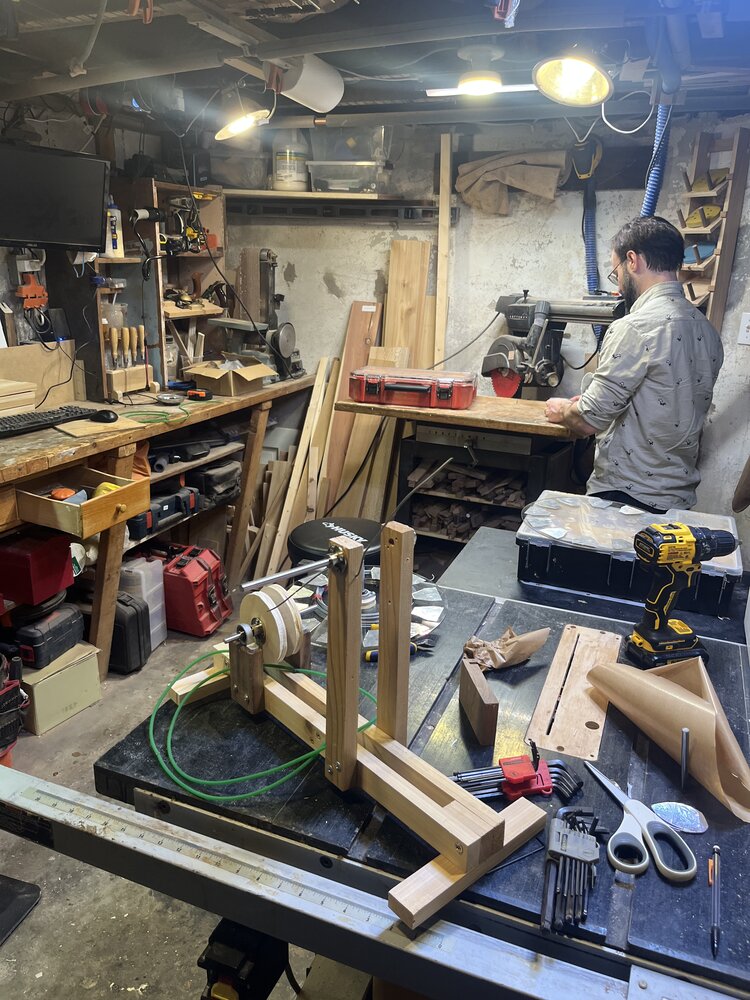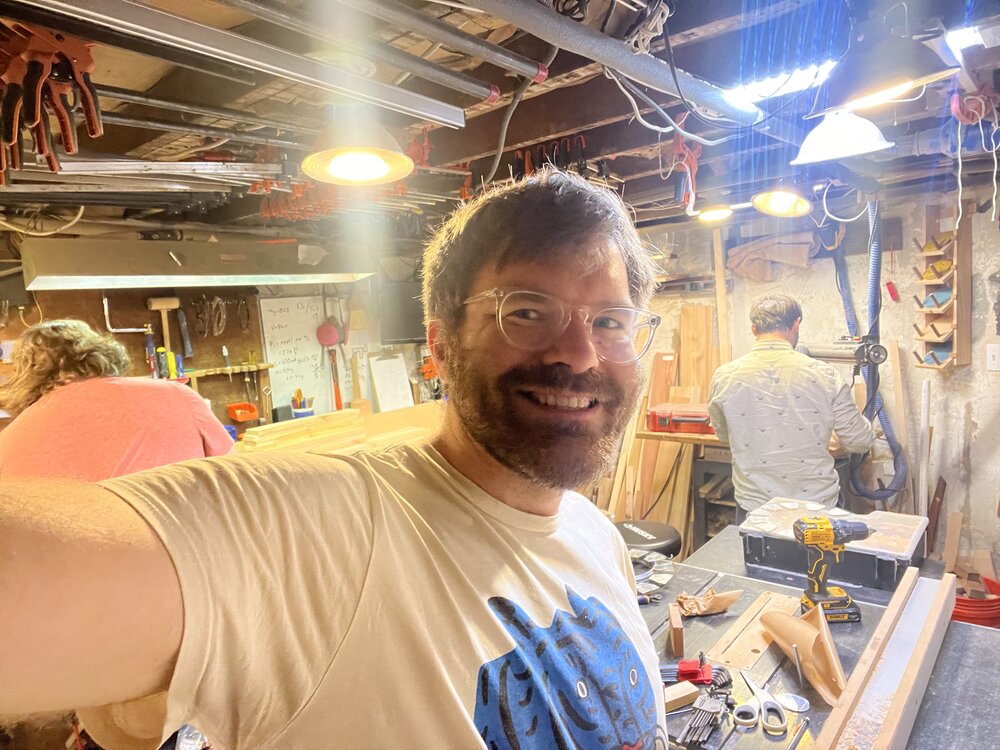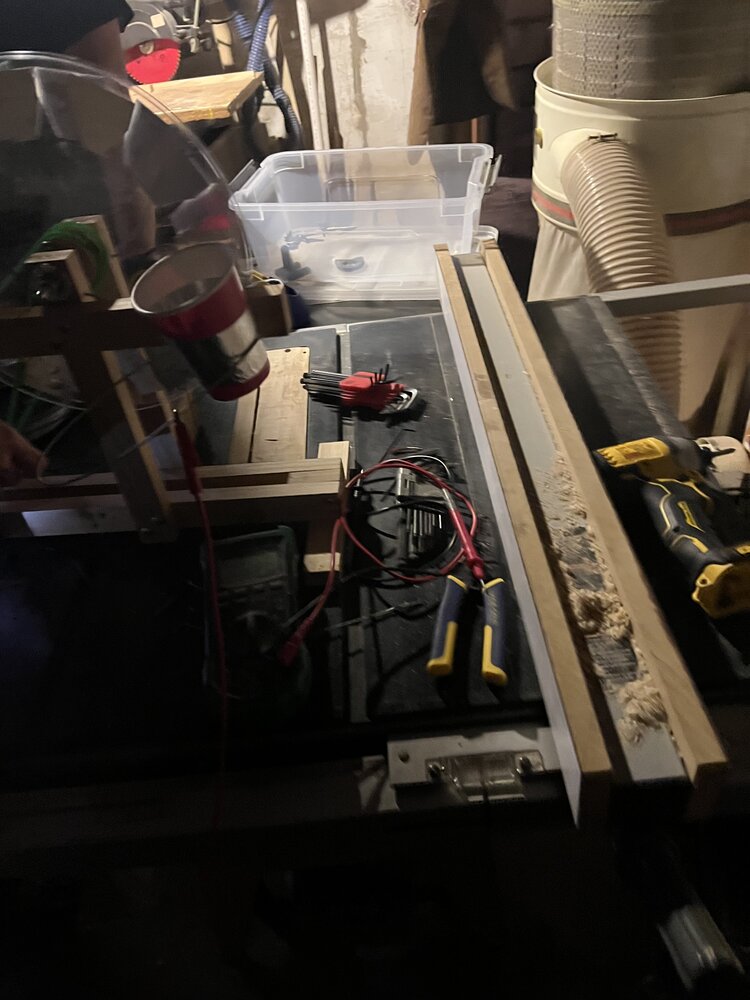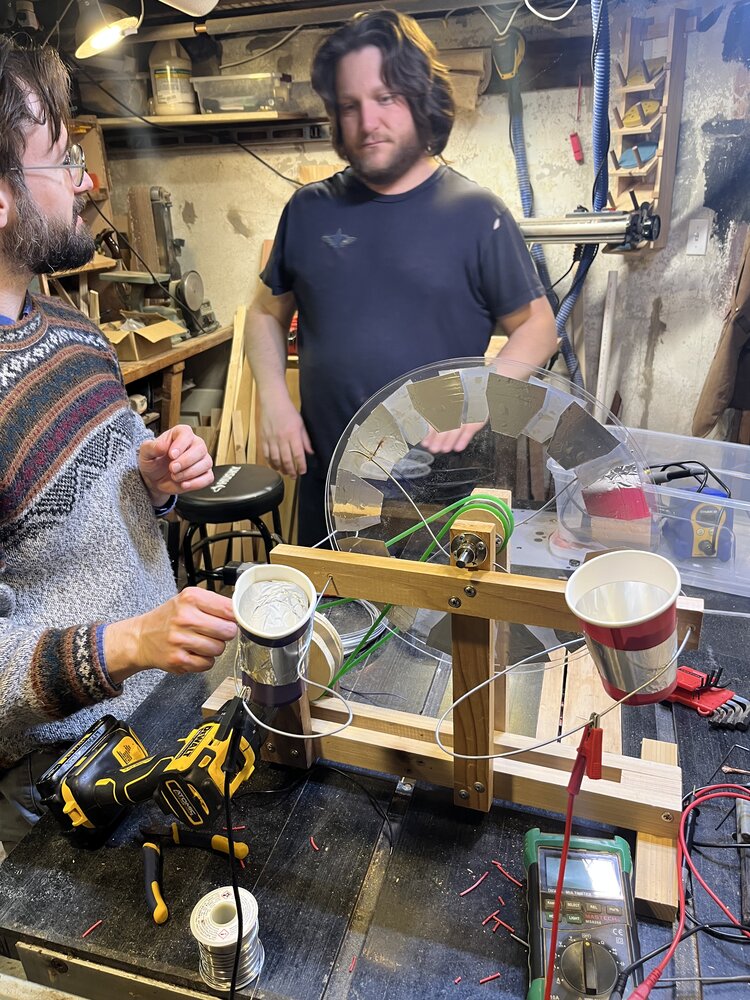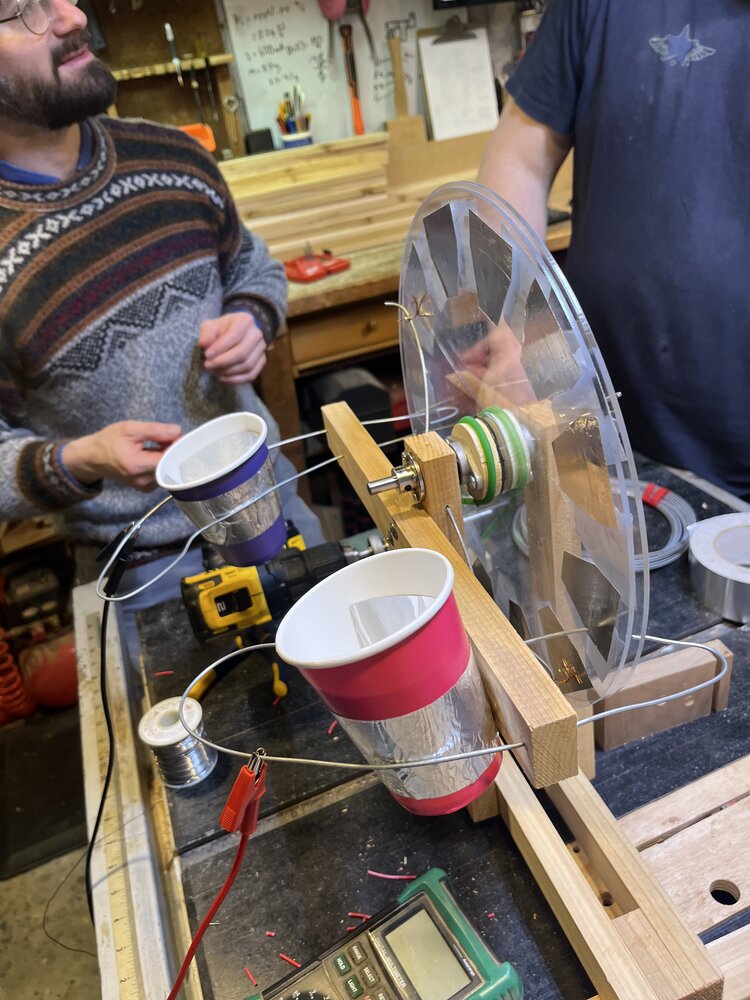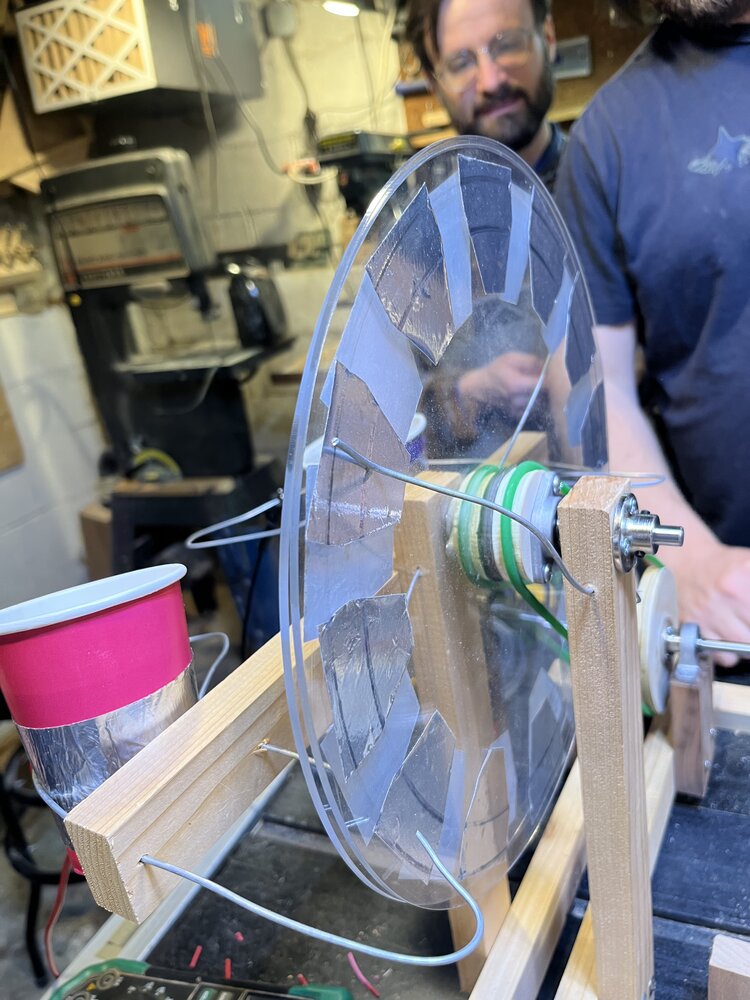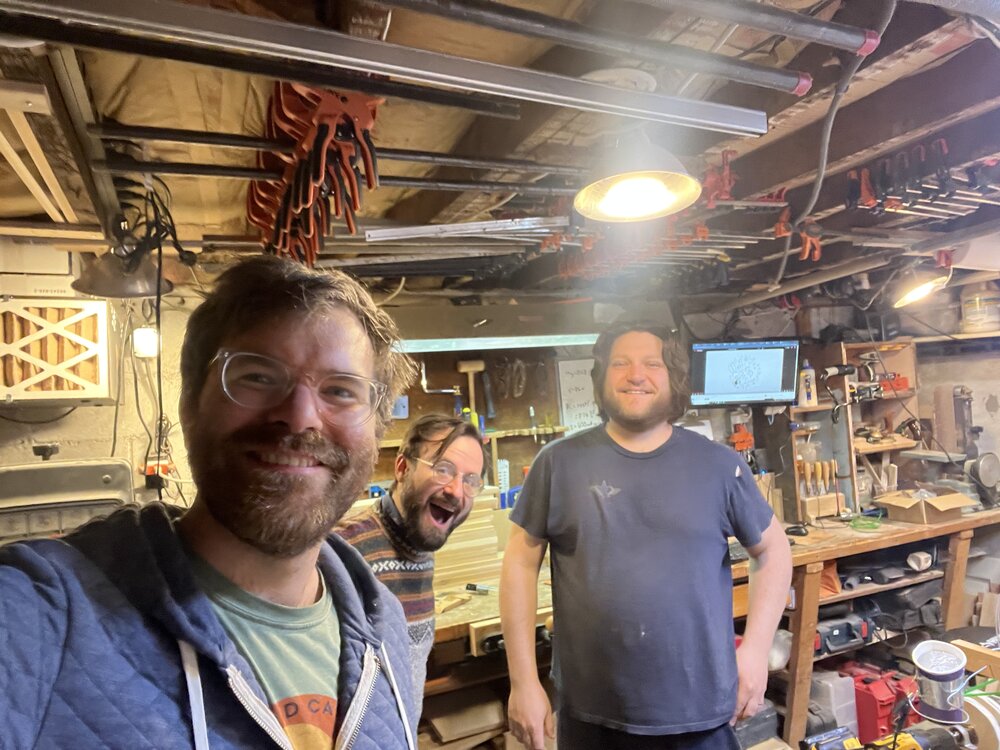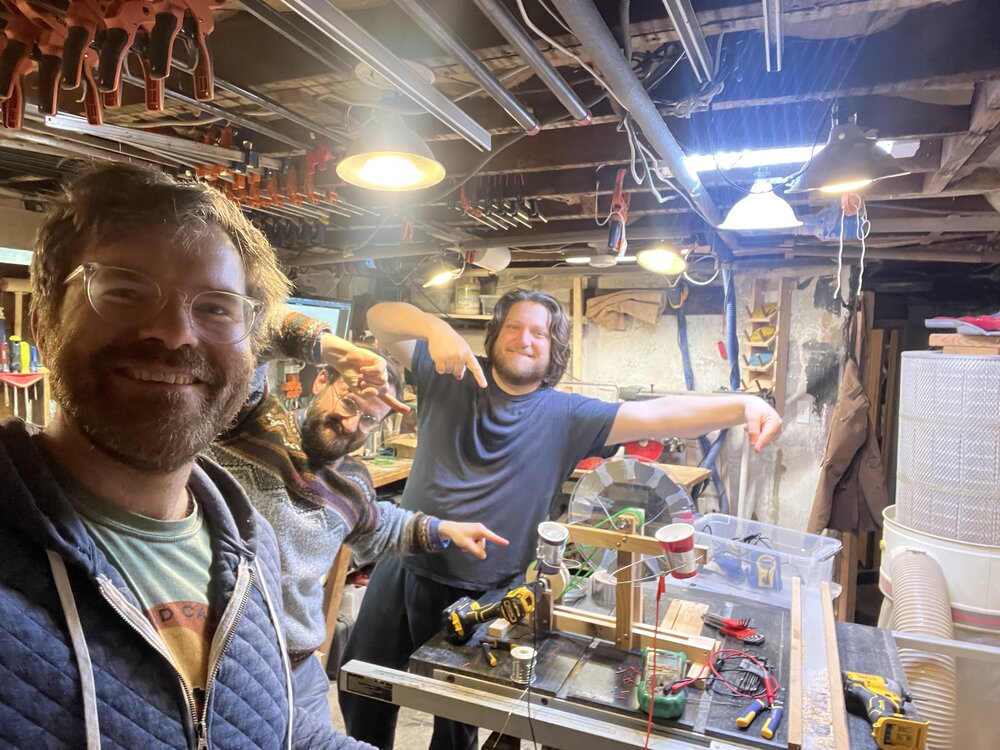A Wimshurst Machine
Ben, Will, and I decided after our triumphant watt balance https://www.philipzucker.com/kibble_balance/ to build a Wimshurst machine https://en.wikipedia.org/wiki/Wimshurst_machine. It’s a simple electrostatic generator that can make sparks. Good clean fun and buildable out of imprecise junk.
It is made of two counter rotating wheels with metals sectors on them. We bought acrylic disks and used aluminum tape.
The design uses hardened steels rods as shafts. The steel rod of the big wheel is fixed and the wheels are mounted on flanged bearings. The drive disk is fixed to it’s shaft which rotates on pillow block bearings. All nice little parts that we learned about from our 3d printer days.
We used round rubber belt which we baught off amazon. We melted the two ends together using a lighter which worked surprisingly ok. There are two belts, one of which is twisted. We thought about maybe using GT2 timing belt but couldn’t seem to think of a way to get the right fixed and free spinning pieces.
Our pulleys are two rough round pieces of plywood glued back to back. The circles were cut at an angle on the bandsaw to give them a bit of a lip.
There are two diagonal “neuralizer bars” we made out of armature wire. It is very useful. We tried to grind down or cover unneccessary sharp points. They all seem to be leak charge and glow subtly with the lights off.
Armature wire also forms the sharp collectors. The “leyden jars” consisting of waxed paper cups and aluminum tape don’t seem to matter.
Static electricity, despite being an older topic, is highly mysterious compared to electrical circuits.
I kind of still can’t grok the mechanism of the Wimshurst machine. One mental model which I think kind of helps is to consider a linear wimshurst machine. I can kind of see that when a sector passes under it’s neutralizer bar, it kind of copies the charge it is across from. In this way you are copying and copying and copying some original charge Q. If you dumped those charges into buckets in the end of the linear wimshurst, the total charge in the buckets would grow.
The wikipedia article claims this is ultimately not the positive feedback mechanism though?
“The process repeats, with each charge on A inducing charges on B, inducing more charges on A, etc. This process, by itself, will not, however, produce the high voltages which are actually obtained because the charge induced on B will necessarily be smaller than the charge inducing it on A. The exponential increase in voltage is due to the fact that any voltage which appears on the poles of the machine generates an electric field across the machine which contributes enormously to the polarization of the neutralizer bars. Obviously, the bigger the voltage across the poles, the greater the degree of polarization and the faster the machine charges up. In the end, this positive feedback loop is more important than the charge transfer process described above which serves merely to get the process going. The energy generated by the machine is derived from the work done in separating the charges on the sectors from the charges on the polarized neutralizer bars at the time when they break contact.” Hmmm.
I don’t have a good conceptual model of how the collector points work. Once a sector stops touching the neutralizer bar, charge is probably mostly conserved on it until it gets near a sharp collector point. Then what? Some current can flow because of breakdown of the air due to concentrated electric field at the sharp tip. I suppose the leyden jar is supposed to help the tip stay near ground voltage. Once the tip reaches the same voltage as the plate passing underneath it, no charge can flow, but a spark crosses the gap before that state is reached.
